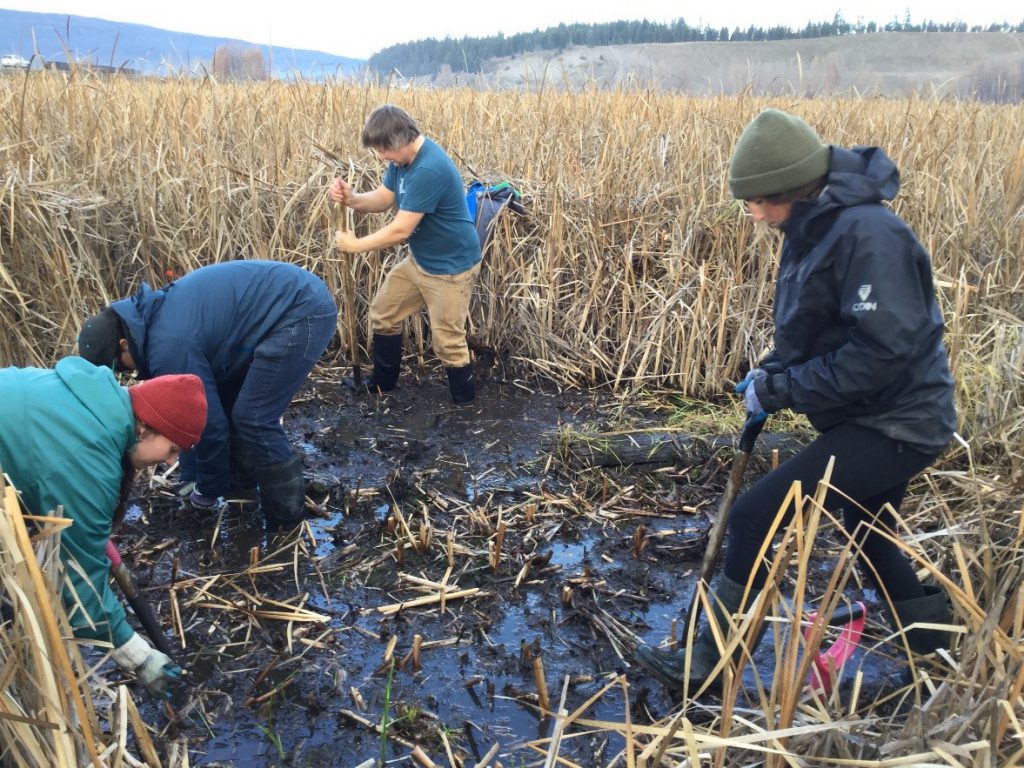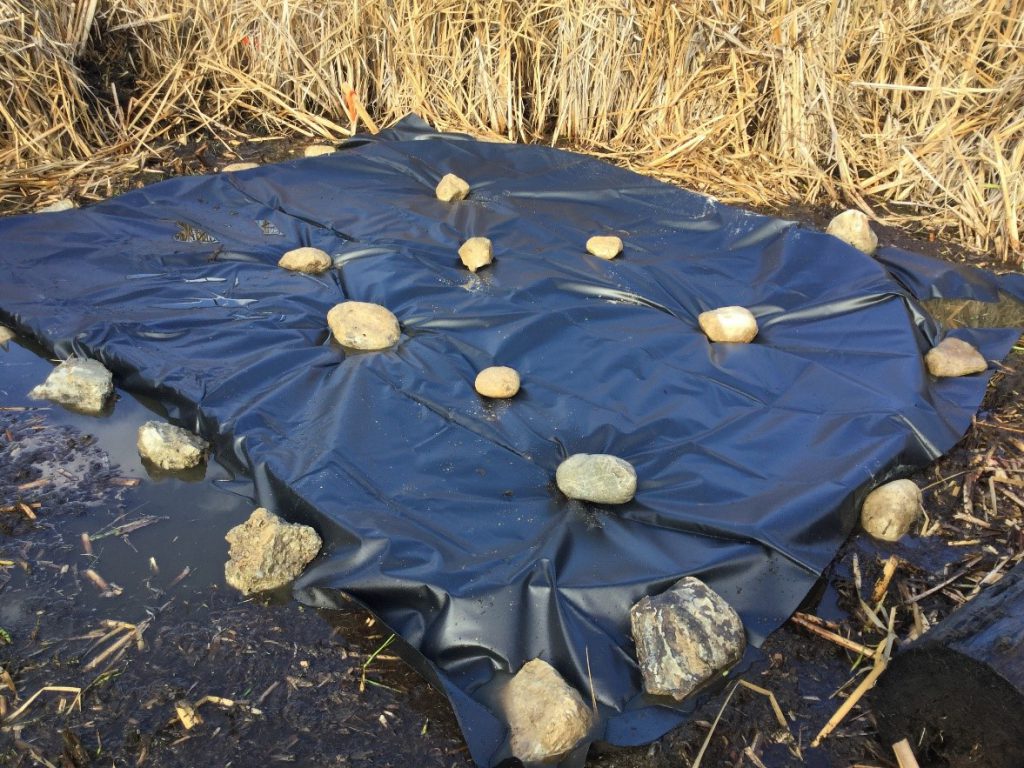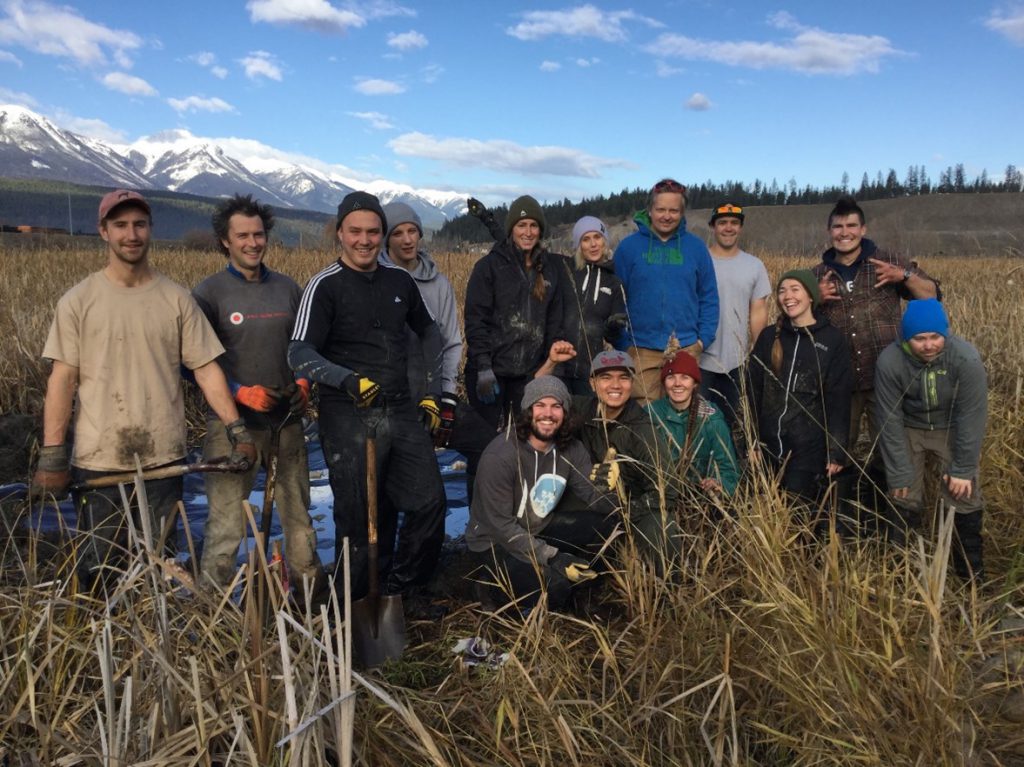Reflection Lake restoration project
The focus of this three-year project is on on-the-ground restoration, returning Reflection Lake, near Golden, to the hemi-marsh condition to increase breeding bird habitat. This project provides hands-on opportunities for students and builds relationships with First Nations that will use cattails for traditional cultural purposes, such as basket-weaving. This project will benefit the provincially Blue-listed Eared Grebe, and other wetland and riparian species, including Sora, Virginia Rail, Pied-billed Grebe, Wood Duck, and Hooded Merganser. Ideal marsh bird breeding habitat is found in wetlands with a well-interspersed “fifty-fifty” vegetative cover and open water. Cattail monocultures are not well-used by birds.
Update: Cattail control at Reflection Lake benefits marsh birds
Restoration work at Reflection Lake near Golden has improved breeding habitat for marsh birds, including the sora, Virginia rail, pied-billed grebe, wood duck, hooded merganser, and the provincially Blue-listed eared grebe.
Excessive cattail growth means less available breeding habitat for these marsh birds. Four 10×12-foot test plots have been set up by Goldeneye Ecological Services to evaluate different methods of cattail control. At each plot, the cattails were removed by hand with help from students the College of the Rockies, and different barriers laid on the ground to inhibit regrowth. As part of the project, a Ktunaxa knowledge-keeper held a workshop for Indigenous community members on harvesting and curing cattail for basket weaving—helping revive a cultural tradition.
An Innovative Approach to Controlling Cattails
- Harvesting cattail for the Ktunaxa weaving workshop. Photo: Goldeneye Ecological Services
- Cattail removal test plot. Photo: Goldeneye Ecological Services
- Placing benthic barrier and edging. Photo: Goldeneye Ecological Services
- Benthic barrier in place. Photo: Goldeneye Ecological Services
- Volunteers for the experimental cattail manipulation. Photo:Goldeneye Ecological Services
Final report: executive summary
Reflection Lake is important breeding marsh bird habitat for several species, including the provincially blue-listed eared grebe (Podiceps nigricollis). A recent marsh bird monitoring project documented Reflection Lake as having high bird species richness compared to other survey stations in the Columbia Wetlands. There has been a noticeable increase in the amount of cattail (Typha latifolia) growing in the lake/marsh ecosystem found here (reducing available breeding habitat), which is likely due to disruptions in hydrology that are human caused.
It is well-known that ideal marsh bird breeding habitat are wetlands with well-interspersed 50:50 vegetative cover/open water, whereas cattail monocultures are not well-used by birds. The focus of this project is on-the-ground experimental cattail manipulation that aims to return Reflection Lake to the hemi-marsh condition, increasing breeding bird habitat. Experimental cattail removal using benthic barriers (in this case, thick tarps placed on lake bottom) may be an effective way of removing patches of cattail. Through our restoration efforts, it was determined that the large cattail mat present at Reflection Lake is floating, making hand-removal efforts an ineffective approach for most of the cattail monoculture due to dangers presented to humans doing the work. It is suggested that other restoration ideas be pursued for the majority of the floating cattail mat; such as auger boring or pipe ramming used for culvert installation under the adjacent highway and railway, or mechanical removal followed by possible muskrat re-introduction.
Click the provincial database link below to read the full final report for this project.







